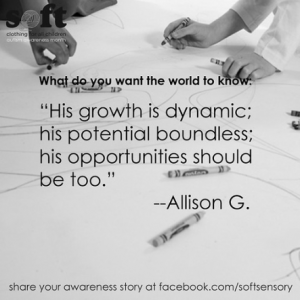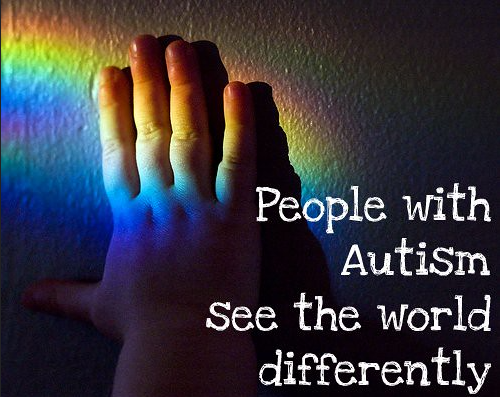Autism Spectrum Disorder is characterized by presence of particular symptoms explained by certain DSM-5 criteria. To summarize, the disorder is characterized by problems with social functioning across multiple contexts, repetitive or restrictive behavior, presence in early development, impairment that is significantly different than normal, and exclusion of any other intellectual disability to better explain the symptoms a person experiences. In addition to this, the DSM characterizes the disease based on severity. These levels can largely impact what kind of treatments are desired or available. Level 1 “requiring support” is characterized by inflexibility that significantly impairs ability to switch between activities, and organize or plan for future events. Level 2 “requiring substantial support” is characterized by behavior inflexibility, difficulty coping with change, or other repetitive and restrictive behaviors. These impairments are obvious, even to a casual observer. Communication skills (both verbal and non-verbal) are significantly impaired and social interaction is limited. Level 3 “requiring very substantial support” is often referred to as severe autism. People with this level of disorder experience severe distress when attempting to transition to new activities or thoughts. They also suffer with lack of flexibility in behavior but this inflexibility interferes with all contexts. Coping with change is severely compromised and social interactions are rarely sought out. When social interaction is sought out, attempts are made in inappropriate or unusual ways. Despite knowledge of the genetic component, little is known about the exact mechanism that causes autism. New research suggests a pathway as well as possible drug treatments for the disorder.
In a normally functioning brain, release of a chemical called glutamate leads to opening of certain channels that allow movement between adjacent cells and extracellular fluid. This movement leads to ion flux which activates a variety of downstream effects through modification of transcription. Transcription is a vital aspect of DNA replication that leads to genes being read and used properly. In ASD, Calcium channels are open too much leading to excess Calcium entering the cell and changes in transcription. Genetic information is then read improperly, leading to the behavior we characterize as Autism. One possible genetic predictor of ASD is SHANK protein. SHANK proteins are separated into several different categories, but SHANK 2 and SHANK 3 are best understood in term of ASD. SHANK 3 is largely responsible for social interaction deficits and repetitive behaviors while SHANK 2 is largely responsible for abnormal motor behavior and problems with vocalization and socialization. Identification of these has pharmaceutical impacts. A drug that partially blocks a certain kind of receptor and a drug that activates a gene that regulates ion flux have been shown to decrease behaviors commonly associated with autism. These studies have been done on mice, but these drugs shed light on potential interventions to cure the underlying mechanisms of Autism Spectrum disorder.
Community
Vital to human existence is our ability to relate to those around us. We crave connection and relation and when we feel misunderstood, we feel isolated and alone. In these times, we reach out to anyone we can. For many families living with autism, reaching out has turned into so much more. Parents of children with ASD often form community forums and support groups. These pages aim to educate other parents and share useful resources for parenting children diagnosed with Autism Spectrum Disorder.
One argument against “curing” autism is that people with autism are a part of a certain community due to their disability. This is similar to people who experience deafness and have the opportunity to use a cochlear implant. At first glance it seems like an amazing opportunity: for the first time a person can hear their own voice or the voice of a loved one. There are countless heartwarming videos when a child hears their parent’s voice for the first time, but there is so much more to the journey. The brain has to develop new pathways to accomodate this new sensation. This new sensation can be overwhelming and challenging to deal with. In addition, this person no longer relates to the deaf community as they once did. They no longer have a support system who fully understands what they are going through. This is similar to the experience people with autism would have if they were “cured.” They no longer would have a community that fully understands what they’re going through.
Hidden Beauty
Creating a cure for a disease on a surface level sounds like something we couldn’t argue against. In this case, it’s a little more complex. Some people with autism feel a sense of freedom through their diagnosis while others are burdened by their social exclusion and inflexibility. Despite this, there is a sense of beauty in something so unique. Underneath the repetitive behavior, anxiety, and self injury is often a passion deeper than what is expected. People with severe autism aren’t impacted by the world the way people without are. The role they play is not defined by the success they have in traditional endeavors like careers and families. Instead, success is defined by the little things: ability to interact with others, sitting, sleeping, playing. Celebration is prolonged and exciting. Anyone who has worked with people with disabilities can tell you just how rewarding it can be. It’s the little things like teaching a child with autism how to make mac and cheese. It was such a little event, but the sense of pride he developed from doing something completely on his own was like nothing I’d ever seen before, and it changed the way I see the world. Every little victory means so much more. Whether you believe in a cure, acceptance, or a little bit of both Autism Spectrum Disorder is so much more than what first meets the eye.
